The Layout -
The layout of any motherboard is important. Even simple mistakes in component placement or the signal traces can cause major issued in performance and stability. With the ATX form factor we find that this is even truer; the devices we drop onto them demand more and cleaner power while the signal speeds push faster and faster. The layout on the X79-UD3 is much closer to the G1.Assassin2 than it is to the UD5. It is still a standard ATX layout, but you only get four slots of RAM instead of eight like on the X79-UD5. This could actually indicate that the UD3 is a good overclocker as you do not have to worry about all of those extra trace lines getting in the way. Gigabyte dropped in the USB 3.0 header in right behind the 24-pin ATX power connector which is as good a place as any to put this. 
Taking a look at the socket and power regulation you will notice that they are using regular Solid capacitors. This is not a bad thing though as they should be 50k hour caps which will give you some room to move if you want to push this board. One thing we do want to talk about here is the heatsink on the power regulators. Although it is tall and thin which should give it good surface area for cooling it will be of little use if you are water cooling your CPU. If this is something you are considering with this board we recommend that you make sure you have good air flow across this area.
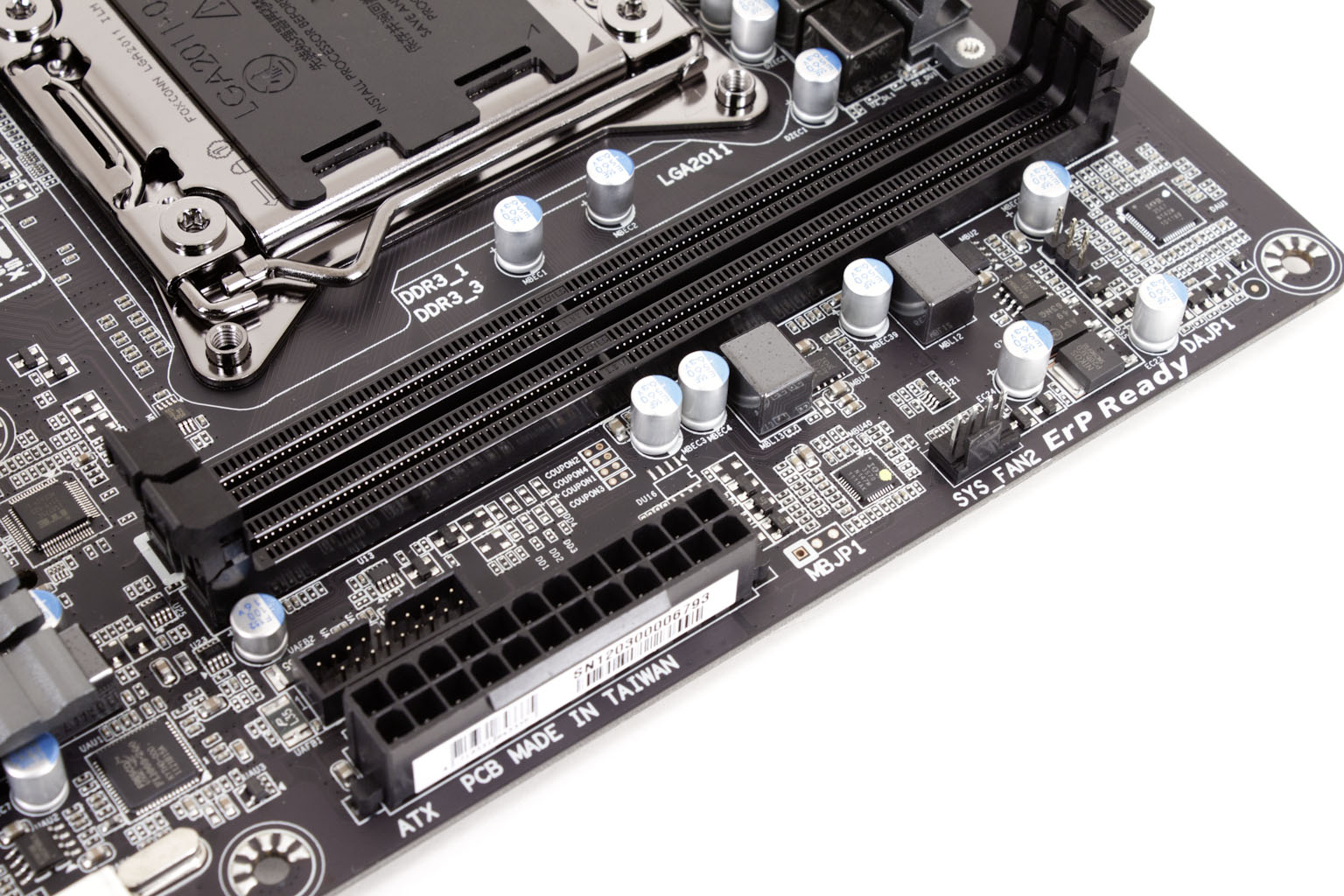 |
 |
One other odd thing about the UD3 that is a tad annoying is that there are only three fan headers near the top of the board. Additionally the placement of the CPU and SYS_Fan make it difficult (if not impossible) to use a standard RAM cooler on the left-hand bank of RAM. This is further complicated by the placement of the 8-Pin ATX Aux power connector. This connector is in a pretty bad place we would recommend an extension cable for this board.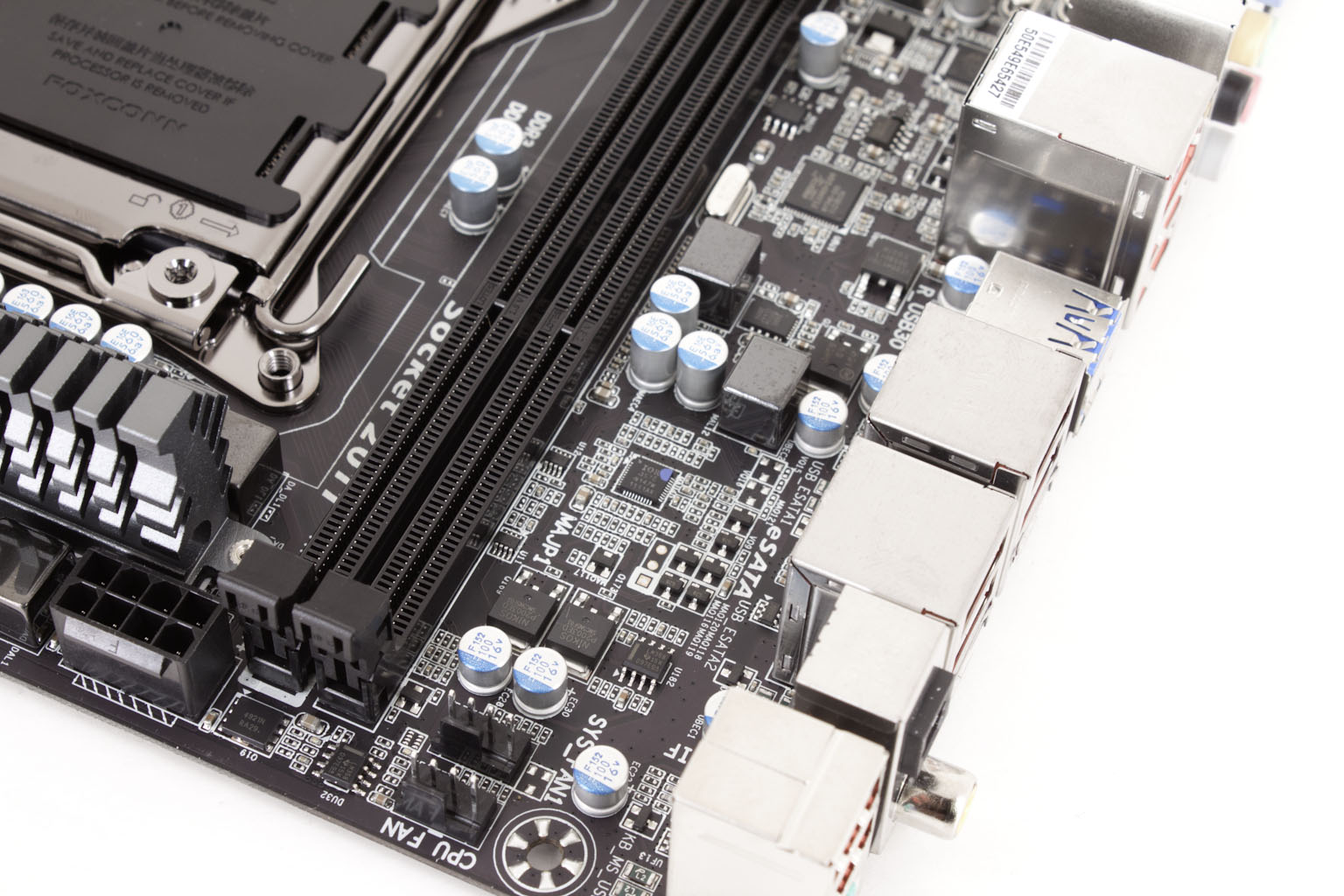
Moving down to the lower half of the board (after you move your own clothes to the lower peg…) you find the four PCIe x16 mechanical slots. Unfortunately only two of these are x16 electrical. This is slot 1 and 3 (referencing PCIe x16 mechanical slots only). Slots 2 and 4 are only x8 this means that your Quad-SLI/Crossfire setup will run at x8 across the board, which is still pretty good.
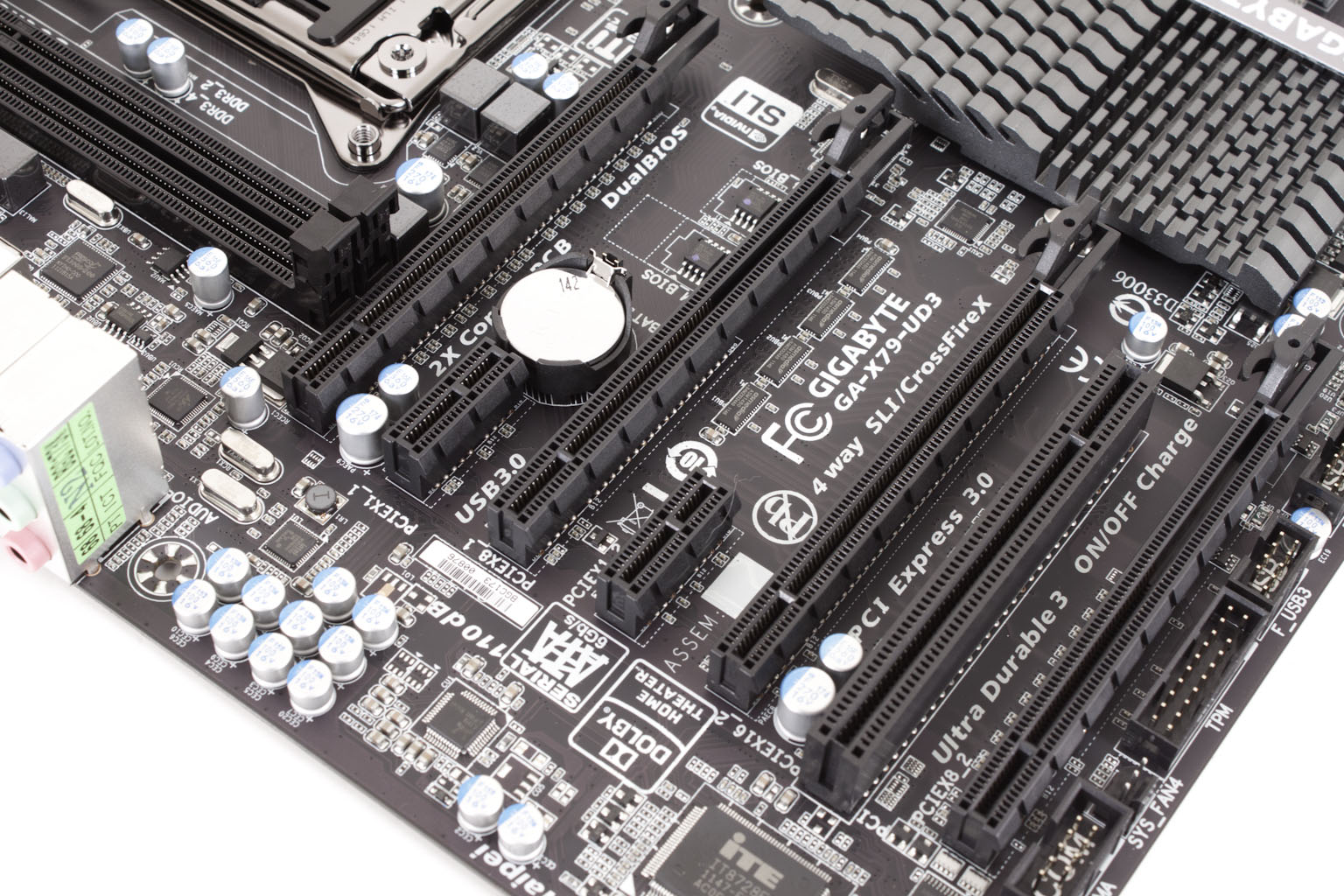 |
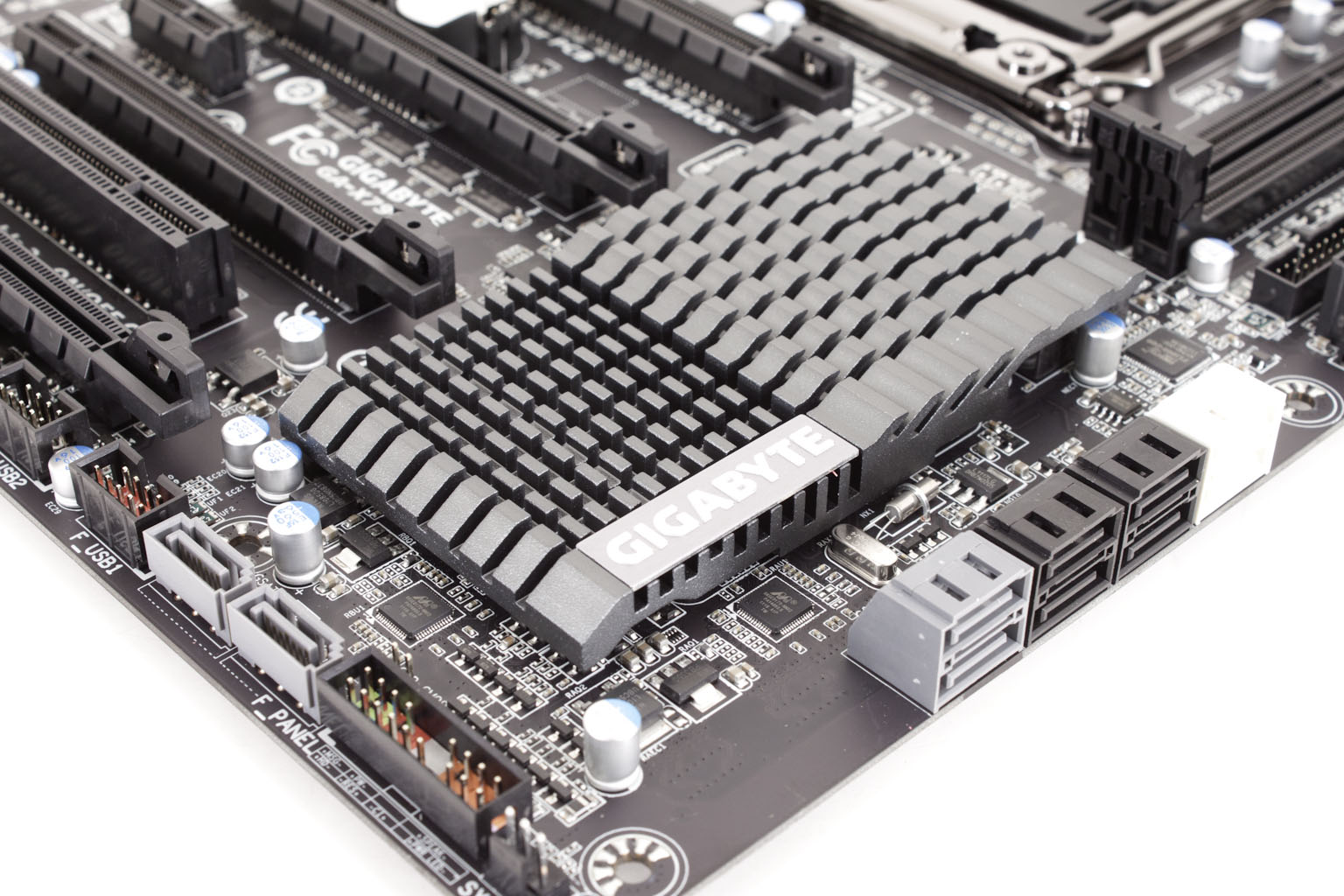 |
The X79-UD3 has a total of eight SATA ports; six of them are SATA 3.0 6GB/s (two are controlled by the X79 and four are controlled by Marvell 88SE9172 Chips). The other four SATA ports are SATA 2.0 so you have quite a few options for SATA expansion on this board. One other item that is worth mentioning is the cooling on the X79 chipset. If you look closely you will see that the fins extend farther out than the actual heatsink body. This allows for a larger cooling surface without changing the height. This is nice touch as it will help keep things cool down in an area the can typically hold onto heat.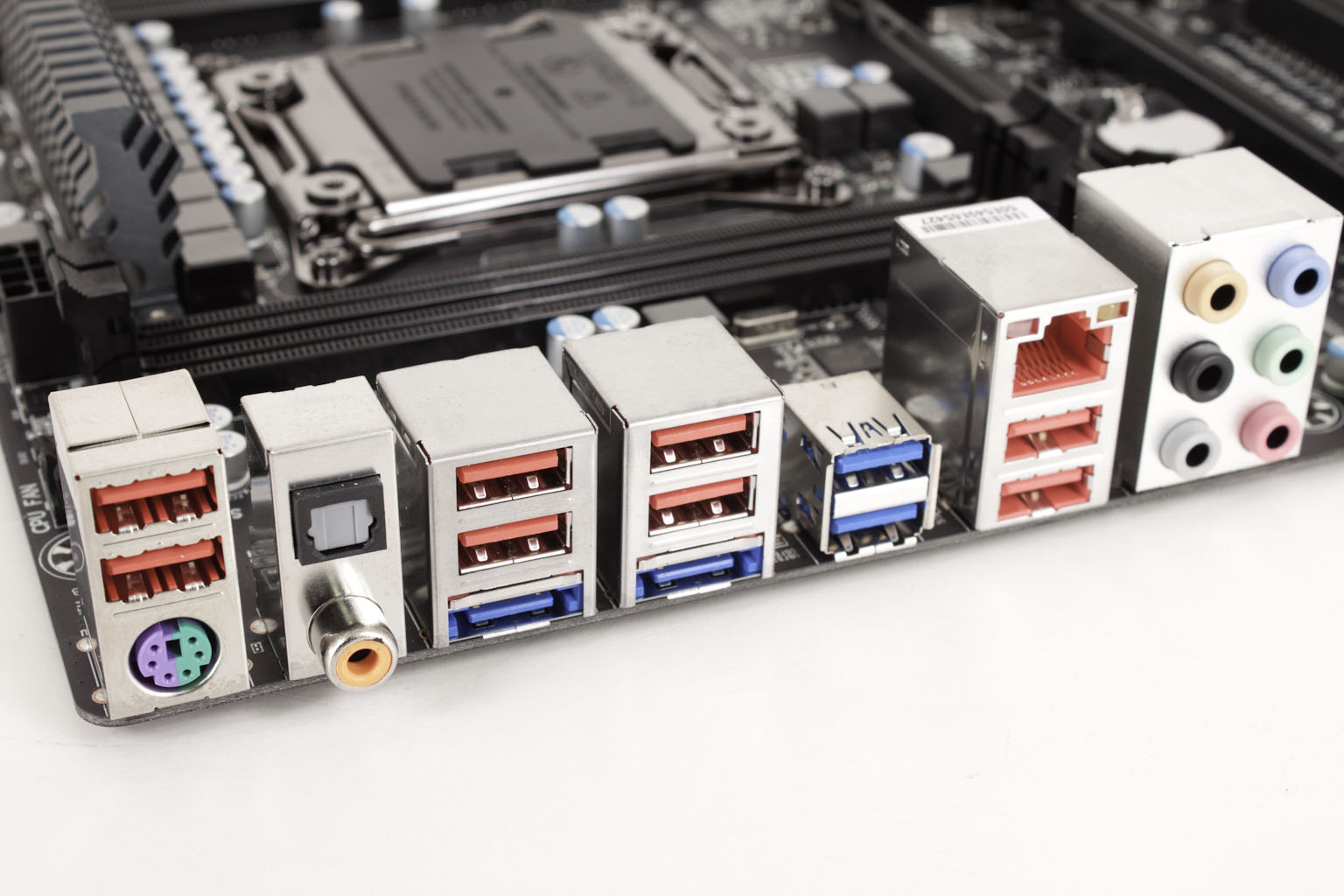
Our last stop if the I/O panel; here Gigabyte has added in their typical line up of items. You have two USB 3.0 ports and two SATA 3.0 ports. These are the blue ports on the back which can be easily confused with USB 3.0 ports at a casual glance. The older USB 2.0 ports are now all in red as is the LAN port.



